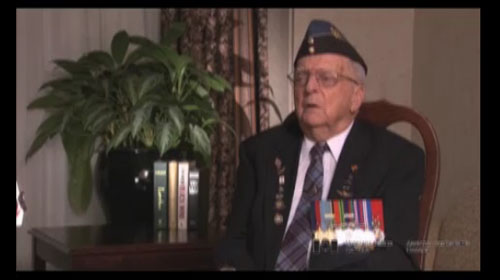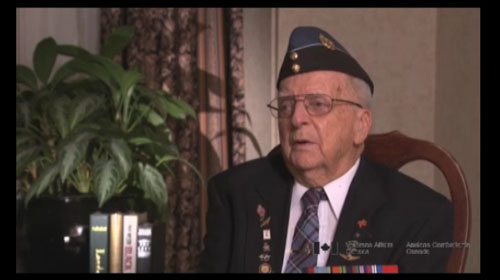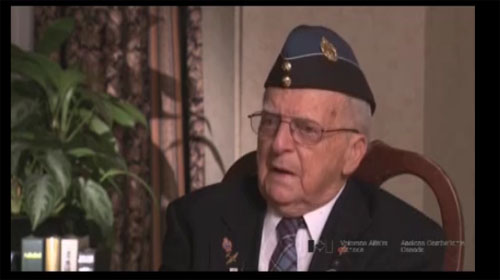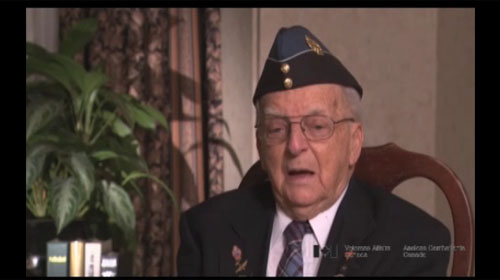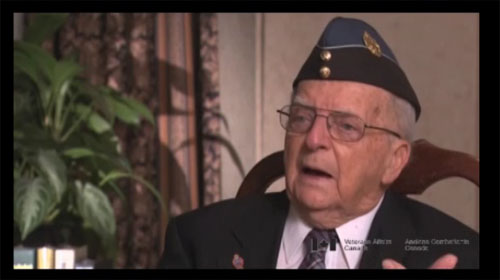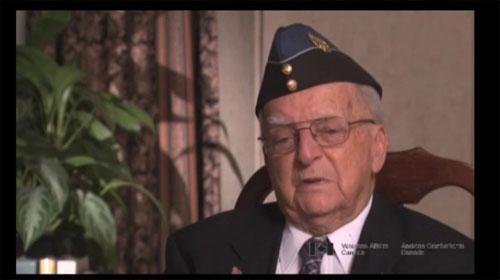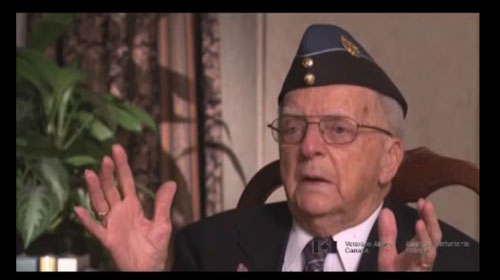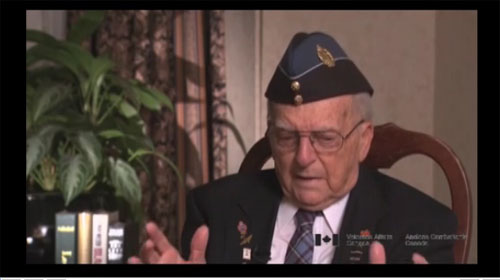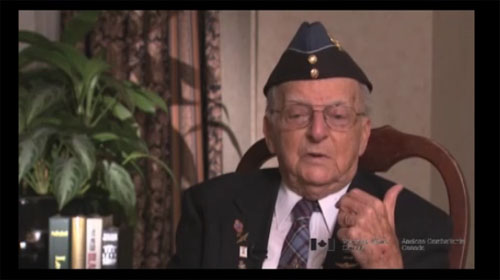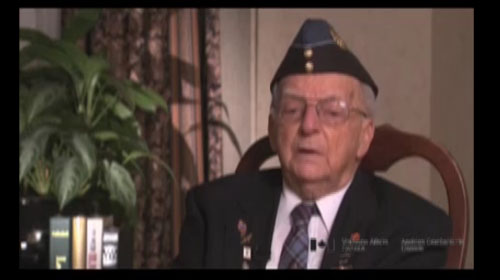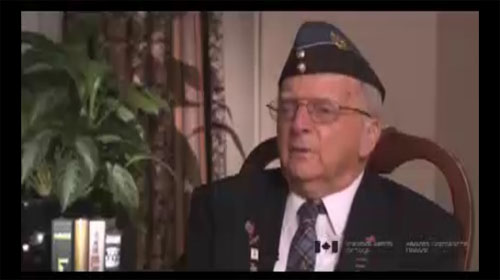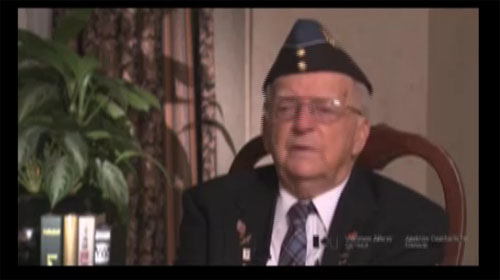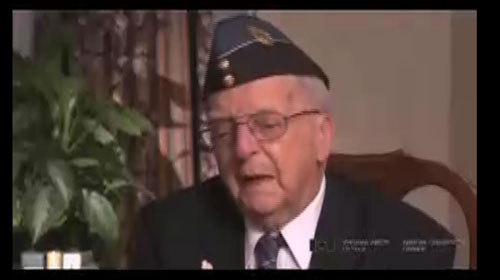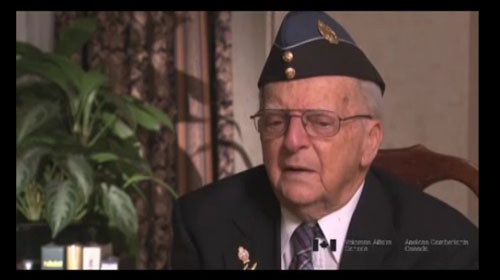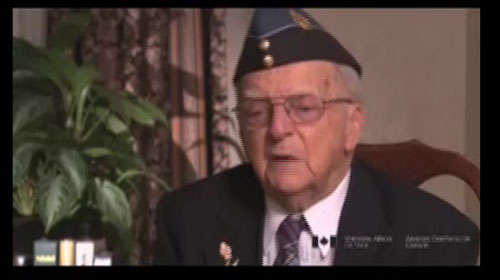It was around one o'clock in the morning of
June 8th, 1944, flying along, actually
almost getting ready to drop our bombs
when the whole aircraft shook as if
someone was hitting it with a sledge hammer.
And what had happened this
German night fighter that was not seen by
either the mid upper gunner or the tail
gunner came underneath us and
as he flew by he just raked the whole
aircraft because the German had invented,
developed a gun that was mounted at
right angles to the fuselage so they didn't
have to point their nose at you, they just fly
underneath you and as they pass underneath
you they rake the plane and so it set the
whole left wing on fire so we got the
order to bail out, jump because,
wow, the whole left wing was on fire and
I opened up my little window and
looked out, oh this is, ya, this is dangerous and
so I grabbed my chute, put it on and
I went to the nose of the aircraft.
In the Halifax aircraft those in the front
leave by an opening in the nose of the aircraft.
It wasn't until many, many years later
when I met my navigator, Gordie Waddell,
he said to me, "Do you remember bailing out?"
I said, "No, I don''t," and I really don't.
What happened I got to the nose of
the aircraft, I was sitting there with my legs
dangling out of the hole and I froze.
Psychologically, emotionally, mentally I froze.
And Gordie who was behind me couldn't get out
because I was blocking his exit so he said
I just put my foot on and shoved you out.
Now I don't remember leaving the aircraft,
I don't even remember grabbing
the D-ring and pulling it.
All I remember is floating down.
And when I was floating down, of course,
the aircraft went down a bit further and
then it crashed and it lit up the whole countryside.
And by the glow of the aircraft I could see
another parachute above me so I knew that
Gordie got out but I could also see
five way behind me.
So I felt comfortable in that the
whole seven got out.
But as I was coming down by the glow
of the aircraft, the fighter plane that
shot us down was making circles around us and
around me and at one time when
he was between the burning aircraft and me,
he was that close that I could see his
silhouette in the cockpit and I
thought he's going to run into me but
he didn't and they wouldn't do that.
While I am up here in the sky,
by the glow of the aircraft I could see
what looked like a church steeple sticking up,
a white one and the Seine River.
And it looked like a bush over here
so I figured as soon as I hit the ground I will run
for the bush and hide in there because you
anticipate as soon as you hit the ground
someone is going to be shooting at you or
yelling at you and so as I was coming down,
while you are up high by the glow
of the aircraft you can see
all this but as you get close to the ground
then the buildings and the hills block
out so now you don't see the ground so
you are bracing waiting for the impact which
comes very unexpectedly and it comes with a
terrible shock, my knees came up,
hit me in my chin, I hurt my back.
I gathered up my chute and I ran towards
what looked like the bush and
before I entered the bush I looked back
towards the burning aircraft and there was a
shadow running towards me in my direction and
it was hunched over. Now I can see him because
he was between the burning aircraft and
me and I was on the dark side and as he got closer,
I said, "Who is it?" "It's Ed."
Here it turned out to be the bomb aimer
so we embraced each other,
we were so thankful we survived.
"We gotta get out of here!"
So Tommy still had his chute, we ran into the
bush and we buried our chute under
some bushes and by a miracle,
by the glow of the moon
it looked like a path.



